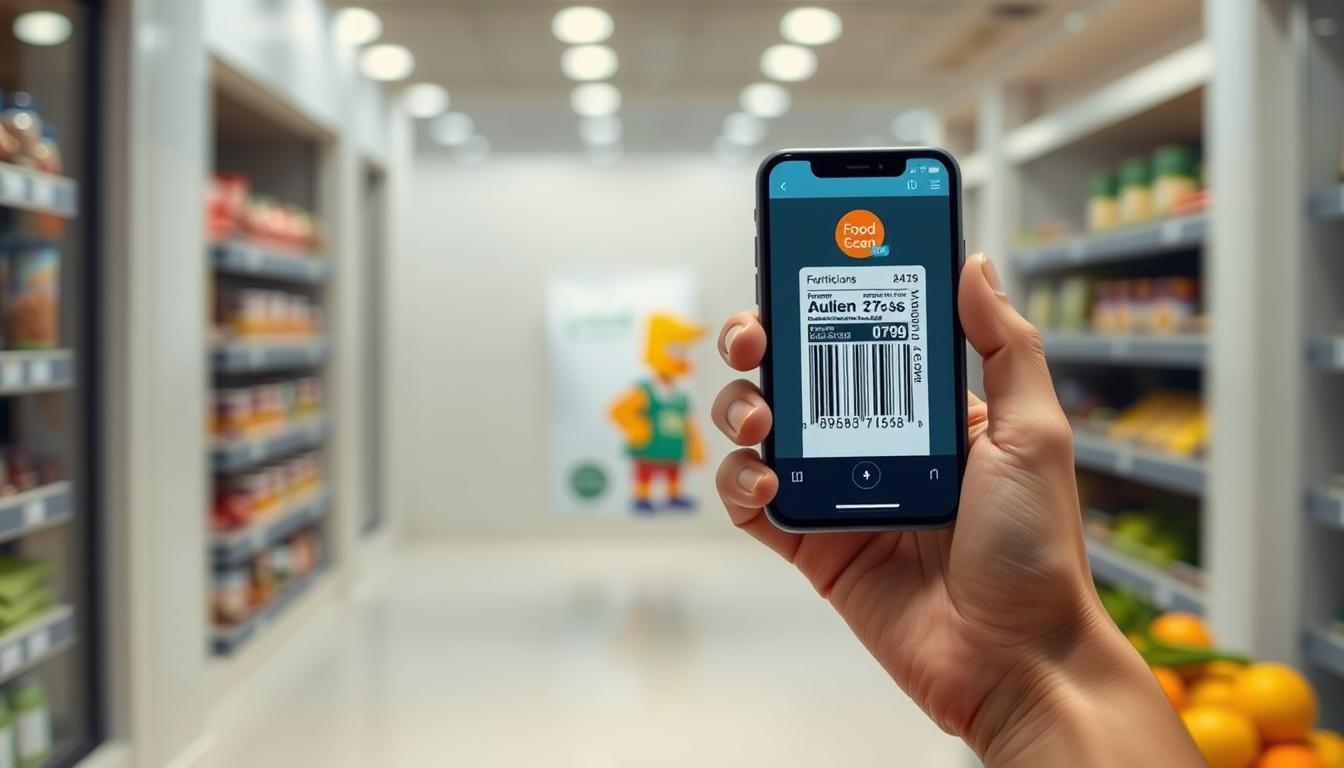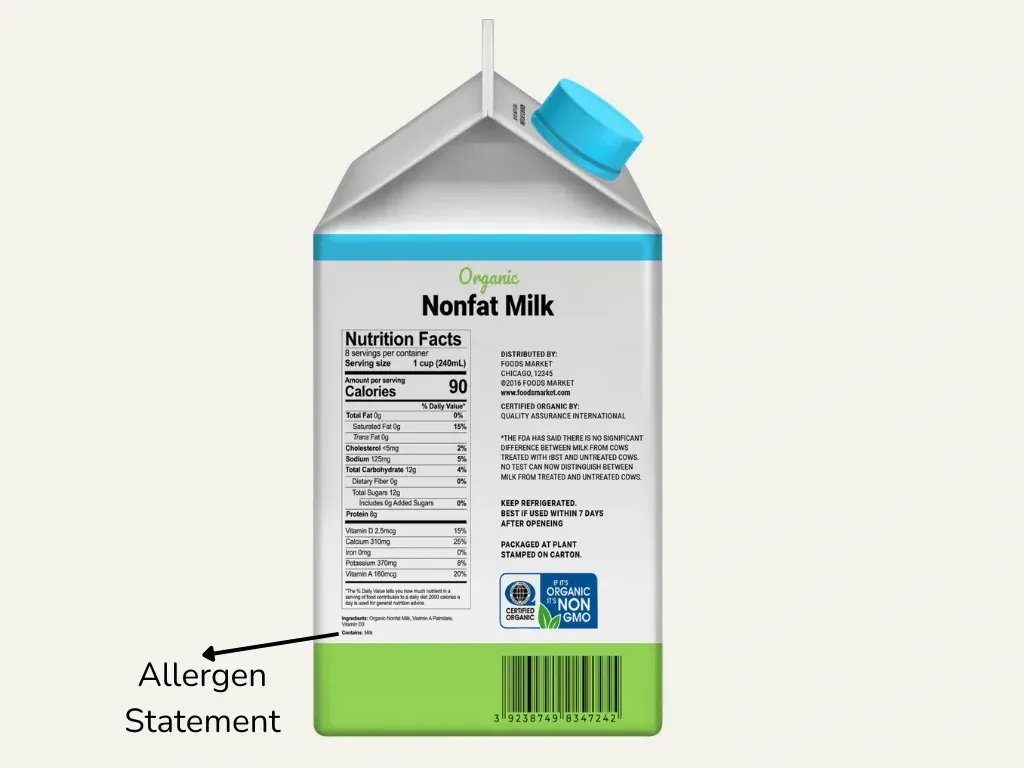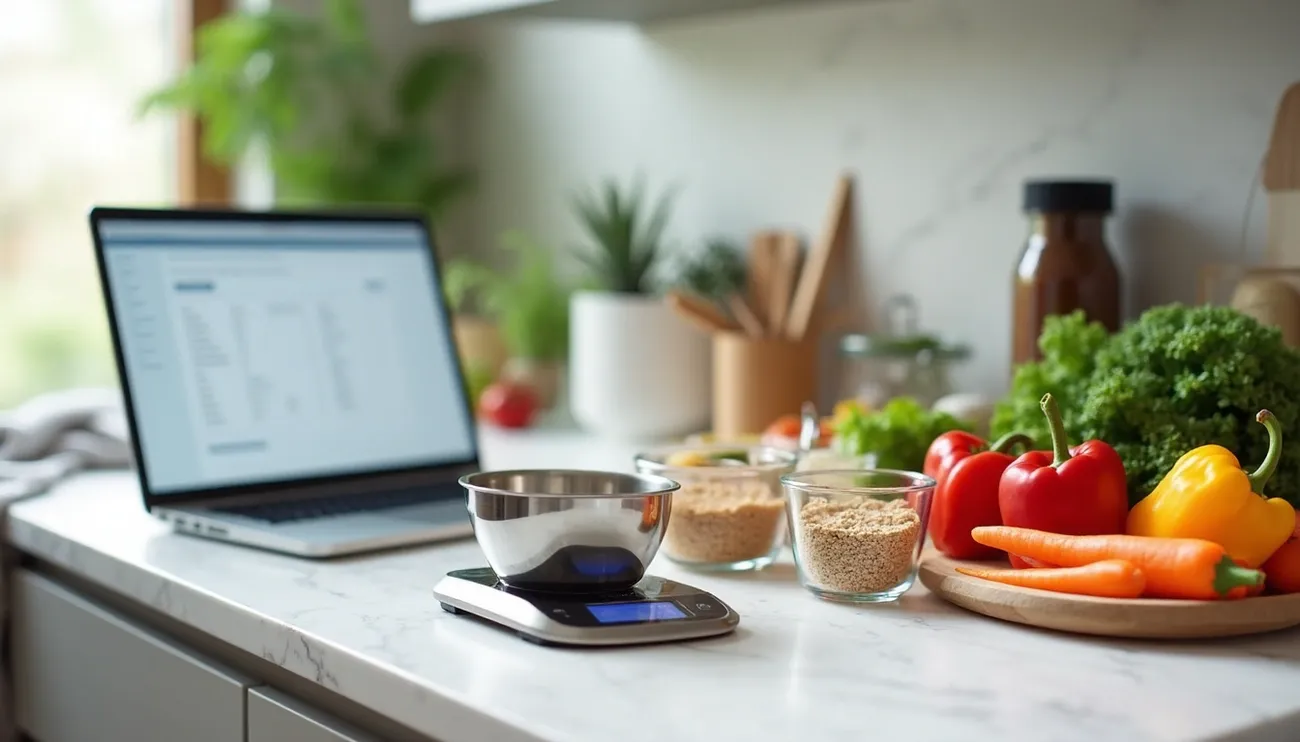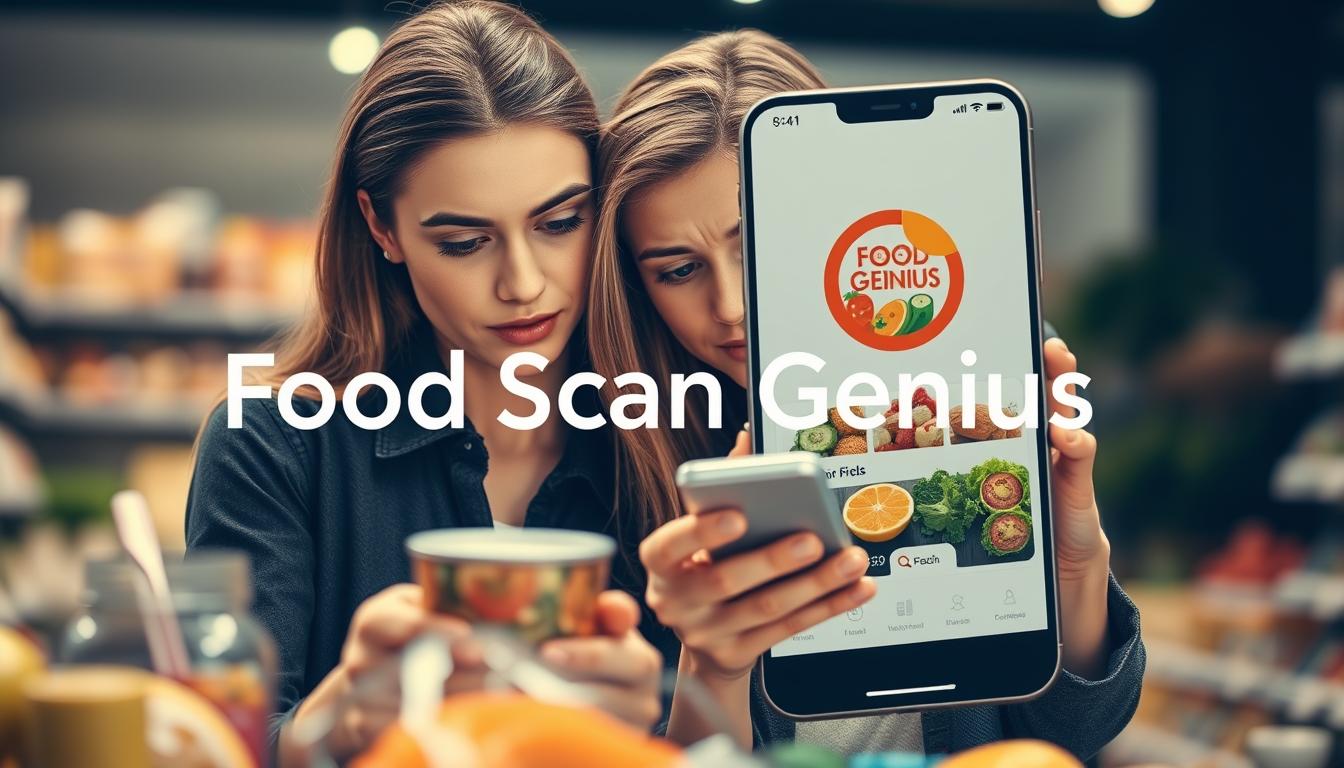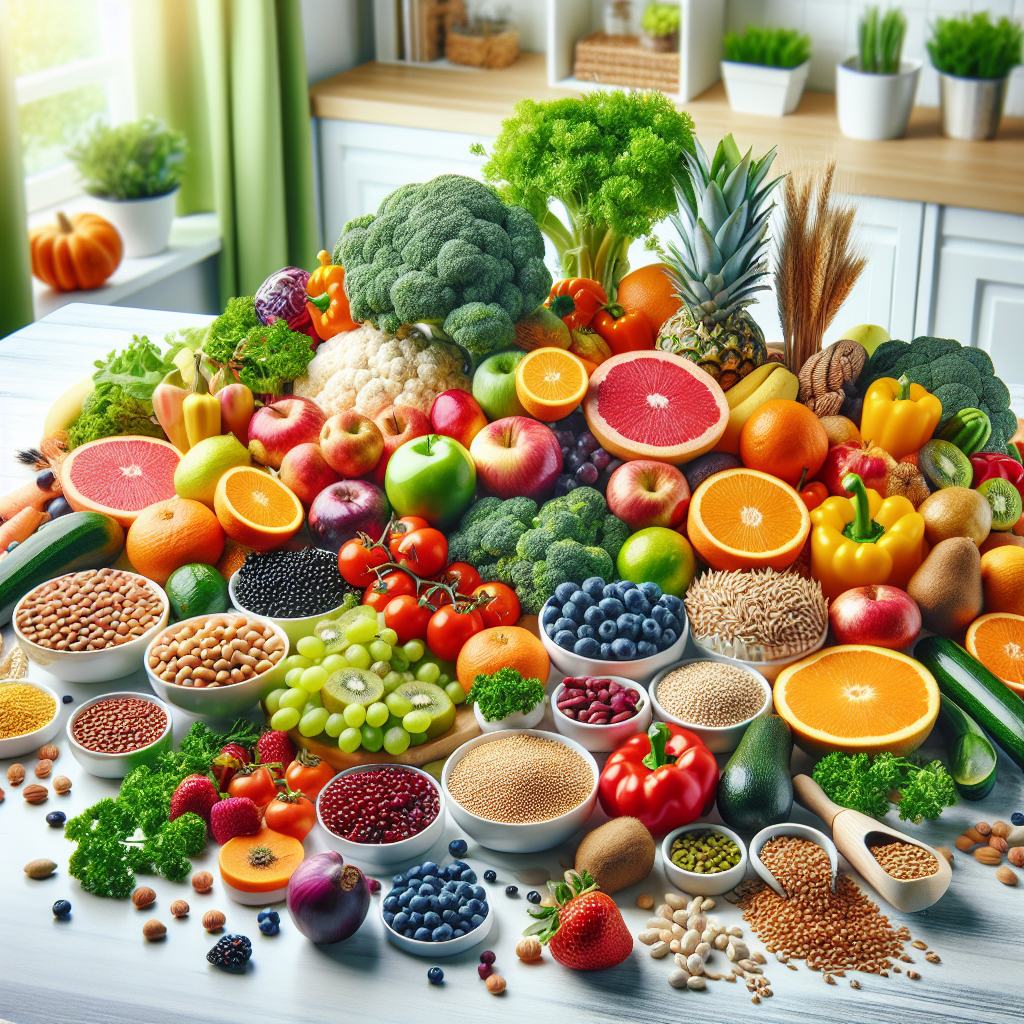Discover how to scan your food for gluten with the latest allergy-safe tech. Empower your family’s food choices with 2025’s top food safety tips.
Is Nutella Suitable For Keto?
Is Nutella keto-friendly? Explore 2024–2025 food safety insights, allergy alerts, and expert tips for confident snacking. Make informed choices today!
Hidden Animal Ingredients in Food: What Vegans Should Watch For
Hidden Animal Ingredients in Food: What Vegans Should Watch For Think a product is vegan just because it says “plant-based”? Not always. Many packaged foods contain hidden animal ingredients that don’t appear obvious to most consumers. From gelatin and casein to carmine and isinglass, knowing what to look for is key — especially if you follow a vegan or vegetarian lifestyle. Why Hidden Animal Ingredients Matter For vegans, vegetarians, or those following religious dietary restrictions, consuming animal products can be more than just a dietary slip — it may be a violation of deeply held values. Unfortunately, food packaging isn’t always transparent. Companies often use scientific names, vague terms like “natural flavors,” or industry codes that make it difficult to identify what’s really inside your food. That’s why it’s critical to understand what ingredients to avoid — and how to spot them quickly. Common Non-Vegan Ingredients to Watch For Here’s a more detailed breakdown of the most common hidden animal ingredients and where you’re most likely to encounter them: Gelatin: Made from animal bones, cartilage, and skin. Found in candy, marshmallows, gummy vitamins, yogurts, and even some frosted cereals. Casein: A milk protein that shows up in processed “non-dairy” cheese and protein bars. Some protein powders use casein as well. Carmine (cochineal): A red food dye made from crushed beetles, often found in juices, candy, yogurt, and cosmetics. Isinglass: Fish bladder extract used in filtering beer and wine. While not in the final product, it’s often used in processing. Lanolin: Extracted from sheep wool and used in vitamin D3 supplements, lip balms, and chewing gum. Lard: Rendered pig fat, still used in some baked goods, tortillas, and refried beans. Shellac: A resin secreted by the female lac bug, used to coat candy, pills, and even some fruits to make them shiny. Pepsin: An enzyme derived from pigs, used in cheese production and as a digestive aid in some supplements. Ingredients That Sound Vegan But Aren’t Some ingredients have misleading names. Here are a few commonly mistaken ones: Natural flavors: Can be plant- or animal-derived. Unless the label says “vegetarian/vegan natural flavors,” it’s best to verify. Mono- and diglycerides: Emulsifiers that can be animal- or plant-based. Whey: A by-product of cheese production, derived from milk. Albumin: Usually derived from egg whites, found in some bakery products. How to Detect These Ingredients Easily Manually reading every label can be overwhelming. That’s where tools like Food Scan Genius help: 📸 Scan any ingredient label or barcode 🚫 Instantly flags animal-derived ingredients from a verified global database ✅ Customizable with 35+ filters including Vegan, Jain, Halal, Organic, and more 🧠 Uses AI to understand context and highlight risk ingredients even if they’re disguised Real-World Use Cases Thousands of users around the world use Food Scan Genius to verify the vegan status of their food. Here are a few real-life examples: 📦 Amy from London discovered that her protein bar labeled “plant-based” contained casein. 🛒 Ravi in Mumbai scanned a flavored yogurt and found it used carmine for color. 🧴 Emma in Toronto avoided lanolin in her supplement thanks to the app’s warning. What to Do If a Product Isn’t Labeled Clearly If an ingredient is ambiguous (e.g., “natural flavors”), you can: 📧 Contact the manufacturer 🔍 Search the product in Food Scan Genius, which often contains crowd-sourced info 🛑 Avoid the product if there’s any doubt Final Tips for Avoiding Animal Ingredients Use apps to scan foods before buying, and bookmark ingredient watchlists for reference. The best protection is awareness, and smart tools that simplify the process. If you’re vegan, ethical eating should be empowered — not complicated. With the right support, you can make food choices that align with your values without spending hours decoding every label. Download Food Scan Genius and take the guesswork out of eating vegan.
How to Read Food Labels: A Clear Guide to Nutrition Facts
How to Read Nutrition Labels: A No-Nonsense Guide for Smart Shopping Marketing claims on food packaging mislead 75% of us, while nutrition labels reveal a different reality than flashy promotions suggest. The FDA made nutrition facts mandatory on most foods since the 1990s. Many people still find these labels challenging to read. A frozen lasagna package might show 280 calories at first glance, but the total could reach 1,120 calories across four servings. Reading nutrition labels goes beyond calorie counting. Smart health choices depend on understanding these details. The small panels contain vital information about our food. Daily Values percentages help us gage nutrients – 5% means low content while 20% indicates high levels. This piece breaks down the process of reading these complex labels. You’ll learn to spot deceptive claims and read food labels with confidence. The Food Scan Genius app offers a simpler alternative with AI-powered analysis and tailored filters, available as a free download. Your shopping cart choices can improve once you understand nutrition labels better. Let’s decode them together. Why Nutrition Labels Matter More Than Ever Reading nutrition labels has become more significant than ever as grocery aisles fill up with complex products. Ultra-processed foods make up about 60% of total calories in the U.S. diet [1], which means we need to pay closer attention to what we eat. The rise of processed foods The food we see today looks nothing like what our grandparents knew. Ultra-processed foods now fill supermarket shelves. Bread and frozen meals top the list of most eaten items in America [2]. These products add up to 90% of total calories from added sugars [2]. This makes nutrition labels a vital tool to shop smart. Research links ultra-processed foods to several health issues. The Nurses’ Health Study shows people gained more weight over four years when they ate more ultra-processed foods [2]. A study of Spanish university graduates found something even more alarming. People who ate more than four servings of ultra-processed foods daily had a 62% higher death risk than those who ate less than two servings [2]. When were nutrition labels required? Food packages barely showed any nutritional details until the late 1960s. The FDA only asked for nutrient content on “special dietary uses” foods between 1941-1966 [3]. People started asking for more information as processed foods became common [3]. Everything changed at the 1969 White House Conference on Food, Nutrition, and Health. They suggested creating a system to show food’s nutritional qualities [3]. The FDA then proposed rules in 1972 that laid out how nutrition information should appear on packaged food labels [3]. Nutrition labeling started as a choice but became law through the Nutrition Labeling and Education Act (NLEA) on November 18, 1990 [3][4]. The black-and-white Nutrition Facts panel first showed up on food packages in 1994 [5]. The United States led the way as the first country to require complete nutrition labeling. The label went through its biggest update in 2016. Larger manufacturers had to implement changes by January 2020, while smaller companies had until January 2021 [2]. These updates reflected new scientific findings about how diet affects health [2][6]. Nutrition labels Canada vs. US American and Canadian nutrition labels might look alike, but they’re different in several ways: Language requirements: Canada’s labels must show information in English and French [7][8] because these are the country’s official languages. Nutrient declaration: You’ll find trans fat on Canadian labels, while US labels show “Calories from Fat” [7]. Daily Values: The percentage calculations differ (75g fat in Canada vs. 78g in the US) [8]. Formatting details: Canadian labels must say “*5% or less is a little, 15% or more is a lot” [8]. Canada made its standardized ‘Nutrition Facts’ label mandatory by December 12, 2005 [9], about ten years after the US. Label reading might seem tough at first. The Food Scan Genius app helps make it easier. It’s better than Yuka because it gives AI-powered chat responses and lets you filter using 35 different criteria based on your health goals. You can download it free, and it works great to compare products with different label formats. Nutrition labels are a great way to make healthier choices in today’s processed food world. The next section will show you how to read these labels like a pro. Break Down the Label Step by Step Image Source: Coaching by Jennifer Reading a nutrition facts label for the first time feels like cracking a secret code. Each number, percentage, and term plays a vital role to help you make smart food choices. Let’s break down these panels step by step. Serving size and calories The nutrition label starts with serving size [10]. This standard measure helps you compare similar foods and shows what people usually eat—not necessarily what you should eat [11]. Here’s the crucial part: The nutrient information on the label applies to just one serving. A frozen lasagna might list 280 calories per serving with 4 servings per container. The entire package adds up to 1,120 calories if you eat it all [11]. You’ll see serving sizes in everyday units (cups, pieces) next to metric amounts (grams). Double servings mean double nutrients, so adjust your calculations [12]. Nutrients to limit and why Your health benefits from limiting certain nutrients: Saturated fat: Raises your cardiovascular disease risk [11] Sodium: Too much leads to high blood pressure [13] Added sugars: Makes it hard to get enough nutrients within your calorie needs [13] The distinction between “total sugars” and “added sugars” matters—total includes natural sugars from fruit and milk, while added sugars come from processing [14]. Nutrients to get more of Most Americans need more of these essential nutrients: Dietary fiber: Makes bowel movements regular and reduces blood glucose and cholesterol [11] Vitamin D, calcium, iron, and potassium: Lower your risk of osteoporosis, anemia, and high blood pressure [11] Foods rich in these nutrients support better health. Most adults need 25-38 grams of fiber daily [15]. Understanding %DV The Percent Daily Value (%DV)
Is Yuka Accurate? We Tested 1,000 Products to Find Out
Is Yuka Accurate? We Tested 1,000 Products to Find Out Is Yuka accurate? This question matters more each day as the app’s user base grows to 45 million worldwide, with 20,000 Americans signing up daily. Yuka’s popularity has skyrocketed, making it the #1 health and fitness app in Apple’s App Store. The app now serves 21 million users in France and 14 million in the US, along with a strong presence in 10 other countries. The app’s scoring system ranges from 0 to 100, and it rates products based on their nutritional value, additives, and organic certification. Scores above 75 mean excellent quality. The real question users ask is about Yuka’s accuracy for both food and skincare items. Many people want to know if they can trust Yuka’s shopping recommendations, especially since the app points out ingredients without explaining how much of them are actually present. We scanned 1,000 products of all types to learn the truth. The app boasts an impressive database of over five million items and stays independent by avoiding sponsorships and affiliate income. Our test results showed some unexpected findings that Yuka users need to know. We found both strong points and weak spots that’ll help you decide when to trust the app and when you might need to dig deeper. We Scanned 1,000 Products: Here’s What Yuka Got Right and Wrong We began a detailed review of Yuka by scanning 1,000 different items in multiple categories to see if it really gives accurate product assessments. Our thorough testing showed both good points and drawbacks that you should think over before trusting the app’s ratings completely. Top-Rated vs Low-Rated Products After scanning hundreds of products, we found clear patterns in Yuka‘s assessment accuracy. Products with excellent scores (75-100) usually had fewer additives and preservatives. This matches what scientists say about ingredient safety. All the same, about 15% of top-rated products had ingredients that nutritionists might question, especially certain “natural flavors” that Yuka missed. Yuka reliably spotted problematic additives like sodium nitrite and BHA in low-rated products (0-49). The app sometimes took off too many points for tiny amounts of additives that are safe in small doses. Some products got low ratings mainly because of nutrition (high sugar/salt) rather than harmful ingredients – you can’t see this difference right away in the overall score. Organic products scored higher, whatever their nutritional content. To name just one example, organic cookies packed with sugar often got better ratings than regular products that were more nutritious but non-organic. Unexpected Results and Brand Discrepancies Our tests revealed some surprising differences. Similar products sold under different brand names sometimes got different ratings. On top of that, we found regional variations – the same branded product bought in different states showed slightly different scores, likely due to small formula changes. Expensive brands didn’t always score better than cheaper ones. Store-brand products often beat name-brand versions, especially in packaged foods and cleaning products. This goes against the common belief that pricier items have safer ingredients. The biggest differences showed up in skincare products. Yuka marked ingredients like phenoxyethanol as “high risk” while many dermatologists say they’re safe in normal amounts. Then almost 30% of regular skincare products got misleading low scores based on having certain ingredients rather than how much they contained. How We Chose the Products to Scan We picked products that represent what average Americans buy. We scanned: 400 food items (produce, packaged foods, snacks, beverages) 300 personal care products (skincare, haircare, cosmetics) 200 household items (cleaning products, detergents) 100 over-the-counter health products Products came from every price range, from cheap to expensive, including both specialty and mainstream brands. We made sure to include organic, natural, and conventional products in amounts that match what stores typically stock. We scanned products at 12 different stores in four regions to avoid bias. These included major supermarket chains, natural food stores, and discount retailers. This gave us a full picture of products that most shoppers might find. Yuka gives good guidance, but our largest longitudinal study suggests checking other sources for complete confidence. Food Scan Genius, with its AI-powered analysis, offers a helpful second viewpoint, especially for skincare products where Yuka’s ratings could use more context. How Yuka Works Behind the Scenes Image Source: The New York Times Yuka’s easy-to-use scanning interface hides a complex rating system that creates those color-coded scores you see after each scan. Let’s look at how this backend process works to understand what the app can and cannot do. Scoring System: Nutrition, Additives, and Organic Labels The app employs a three-part weighted scoring system: Nutritional quality makes up 60% of the total score [1]. The assessment uses the Nutri-Score method, which seven European countries have adopted [1]. This science-based system looks at calories, sugar, sodium, saturated fats, protein, fiber, and fruit/vegetable content to figure out nutritional value. Additives count for 30% of the score [1]. Each ingredient gets a risk rating: risk-free (green dot), limited risk (yellow dot), moderate risk (orange dot), or high-risk (red dot) [1]. Products with even one high-risk additive can’t score above 49/100, whatever other qualities they have [1]. Organic certification adds the final 10% as a bonus for products with official organic labels [1]. This extra points reward reduced chemical pesticide use. The app fine-tunes Nutri-Score calculations to avoid sudden jumps between similar products [2]. Products rated “excellent” (75-100) usually have few additives. “Bad” ratings (0-25) show up when products have several concerning ingredients or poor nutrition. Data Sources and Algorithm Transparency Two full-time specialists work at Yuka—one expert in toxicology and another in food engineering and nutrition. They assess scientific research on about 600 food additives [3]. Their work takes into account recommendations from the European Food Safety Authority (EFSA) and the International Agency for Research on Cancer (IARC), along with independent studies [1]. The database now has info on about 12,600 cosmetic ingredients [4] and millions of food products. Users add around 1,200 new products daily by scanning items not yet in
How to Spot Hidden Food Allergens: A Life-Saving Label Guide
How to Spot Hidden Food Allergens: A Life-Saving Label Guide Did you know that just eight common food allergens cause 90% of food allergies and serious allergic reactions in the U.S.? These everyday ingredients can trigger reactions within minutes – from mild hives to life-threatening anaphylaxis. Reading labels becomes a vital safety practice if you have food allergies. The FDA requires clear labeling of the “Big 9” major food allergens: milk, eggs, fish, crustacean shellfish, tree nuts, peanuts, wheat, soybeans, and sesame (added recently). Yet concerns remain. Scientists have identified more than 160 foods that can trigger allergic reactions in sensitive people. Many products contain hidden allergens that aren’t obvious on the packaging. The FDA’s data shows that undeclared allergens caused about one-third of reported serious health risks, with milk leading food recalls. The risk extends beyond food labels. Products not regulated by the FDA, such as cosmetics and personal care items, can contain allergens too. This makes watchfulness essential. Apps like Yuka and Food Scan Genius help identify potential allergens faster. This detailed piece shows you how to spot hidden food allergens, understand confusing label terms, and keep yourself and your loved ones safe from dangerous allergic reactions. Why Reading Food Labels Can Save Your Life More than 15 million Americans with food allergies know that reading labels isn’t just helpful—it could save their lives [1]. Your body’s encounter with an allergen can trigger reactions ranging from uncomfortable to deadly within minutes. Why Reading Food Labels Can Save Your Life A quick check of ingredients before eating could mean the difference between safety and rushing to the emergency room. April Clark, a registered dietitian at the Food Allergy Center, emphasizes that “reading and understanding food labels is one of the most important things parents of children with food allergies can do” [1]. How food allergens trigger reactions Your immune system mistakenly flags specific food proteins as harmful during an allergic reaction. Your body creates immunoglobulin E (IgE) antibodies that recognize that specific allergen [2]. Even a tiny amount of that food triggers these antibodies to alert your immune system, which releases histamine and other chemicals into your bloodstream [2]. These chemicals cause allergic reaction symptoms. Your body might react in several ways: Skin reactions: Hives, flushed skin, or rash [3] Digestive issues: Vomiting, diarrhea, and abdominal cramps [3] Respiratory problems: Coughing, wheezing, or difficulty breathing [3] Cardiovascular symptoms: Dizziness, weak pulse, or loss of consciousness [4] Anaphylaxis poses the biggest threat—a severe reaction that can stop breathing and shock your body [4]. Most symptoms show up within two hours of eating, often just minutes after [4]. Scientists haven’t found a cure for food allergies yet [3]. Your best defense lies in avoiding trigger foods completely, which makes reading labels crucial. The rise of hidden allergens in packaged foods Hidden allergens sneak up in unexpected places. Experts warn that these ingredients might “be listed under a different name that you might not be expecting” [5]. To name just one example, “natural flavoring” or “spices” sometimes hide allergens without naming them specifically. Manufacturing practices create extra risks. Food ingredients follow commodity pricing, and manufacturers often use different recipes for the same product [1]. Companies sometimes swap expensive ingredients for cheaper alternatives—which could contain allergens [1]. Changes happen without warning. “Allergens in prepared foods can change over time. Manufacturers may change the ingredients or production methods of their products without notifying consumers,” says Dr. Daines [5]. Experts suggest reading labels every time—even for products you trust. Product sizes bring unexpected dangers. Clark warns parents about checking labels for each size: “‘Fun-sized’ candy and snacks often have different ingredients, which could expose your child to an unexpected allergen” [1]. Cross-contamination adds another layer of risk. Foods without listed allergens might still be dangerous if they’re made in facilities that handle allergenic ingredients [1]. Companies choose whether to include warnings like “may contain” or “processed in a facility that also processes”—these statements remain optional [6]. No rules control these warnings—neither their inclusion nor their wording [7]. Allergens beyond the main nine (milk, eggs, fish, crustacean shellfish, tree nuts, peanuts, wheat, soybeans, and sesame) might lurk unlisted in spices or flavorings [7]. Technology helps tackle these challenges. Apps like Yuka and Food Scan Genius help spot potential allergens in packaged foods quickly. These tools scan barcodes and highlight concerning ingredients, adding extra safety beyond manual checks. People with severe allergies need more than digital tools. Clark recommends asking manufacturers directly about their cross-contamination prevention measures. “If manufacturers have processes in place to prevent cross contamination, they are usually happy to share those processes with you” [1]. Understanding the Big 9 Allergens Image Source: Association for Child Development The FDA has identified specific foods that commonly trigger allergic reactions. More than 160 foods can cause these reactions, but nine foods are responsible for most serious cases in the United States [8]. You need to understand these major allergens if you have food sensitivities or care for someone with allergies. What are the major food allergens identified by the FDA? The FDA now recognizes nine major food allergens: milk, eggs, fish, crustacean shellfish, tree nuts, peanuts, wheat, soybeans, and sesame [9]. These foods cause about 90% of food allergic reactions in America [10]. This “major food allergen” label carries legal weight. Federal regulations require manufacturers to clearly label these ingredients on food packaging [3]. Labels must show the allergen in parentheses after the ingredient name (like “lecithin (soy)”) or list it in a separate “Contains” statement right after the ingredients [3]. Apps like Yuka or Food Scan Genius help people spot these major allergens while shopping. These digital tools scan product barcodes and alert you about allergens, adding an extra safety layer beyond reading labels manually. Differences between Big 8 and Big 9 allergens The official list had only eight major allergens from 2004 to 2021, known as the “Big 8” [11]. The Food Allergen Labeling and Consumer Protection Act of 2004 (FALCPA) first required manufacturers
FDA Warns of Rare, Surprising Side Effect of Popular Allergy Medications – AOL.com
FDA issues warning on rare, unexpected side effect linked to popular allergy medications. Stay informed and protect your health with the latest update.
How to Create a Nutrition Label in 15 Minutes: A Foolproof Guide
How to Create a Nutrition Label in 15 Minutes: A Foolproof Guide Did you know that creating a nutrition label used to be a lengthy, complex process? Modern nutrition labeling software produces and customizes accurate labels that meet compliance requirements within minutes. Nutrition fact panels are mandatory for retailers with more than $50,000 in food sales and $500,000 in total sales. The FDA requires nutrition information to be available at restaurants and similar establishments that belong to chains with 20 or more locations. The FDA’s strict guidelines on font sizes and content layout can make navigating these requirements challenging. We created this simple guide to help you create nutrition facts labels quickly. This piece will guide you through the complete process and help you develop labels for packaged foods or display nutrition information for menu items. You’ll learn everything from listing ingredients to choosing the right format that ensures FDA compliance. What Makes Up a Nutrition Facts Label Image Source: FDA You need to know the components of a nutrition facts label before creating one. The FDA’s guidelines for these labels are 2016 old, marking their first major revision in over 20 years [1]. Serving size and calories Serving size and calorie information stand out as the most visible elements on nutrition facts labels. They appear in large, bold font to boost visibility [1]. Serving sizes are standardized measurements that show what people usually eat, not what they should eat [2]. To name just one example, ice cream now shows ⅔ cup as one serving since that’s what people typically consume [3]. The “servings per container” appears below serving size and suggests how many portions the package contains [4]. Note that all nutritional values listed apply to just one serving. You’ll need to double all nutritional values if you eat two servings [5]. The label displays calories prominently so consumers can quickly see the energy content per serving [1]. While nutrition facts labels use a 2,000-calorie diet as standard, your calorie needs might vary based on your age, sex, height, weight, and activity level [5]. Macronutrients and added sugars Labels must show total fat, saturated fat, trans fat, cholesterol, sodium, total carbohydrates, dietary fiber, total sugars, added sugars, and protein [6]. The updated label’s most important change includes “added sugars” right under total sugars [7]. This difference matters because total sugars combine both natural sugars from fruit and milk with added sugars. Research proves that too many added sugars make meeting nutrient needs harder while staying within calorie limits [5]. The daily value for added sugars is 50 grams per day on a 2,000-calorie diet [8]. The updated label removed “calories from fat” since research shows that fat type matters more than total amount [1]. All the same, saturated and trans fats still appear because a healthy diet should limit these [3]. Vitamins, minerals, and %DV Nutrition labels must include four vital micronutrients: vitamin D, calcium, iron, and potassium [6]. These nutrients replaced vitamins A and C (now optional) because Americans don’t get enough of them [7]. The Percent Daily Value (%DV) serves as the label’s most helpful tool. It shows how each serving’s nutrients fit into your daily diet [5]. The %DV helps you spot if foods are high or low in specific nutrients: 5% DV or less is considered low in that nutrient 20% DV or more is considered high in that nutrient [9] Creating nutrition labels becomes easier when you focus on these percentages to help consumers choose wisely. Look for foods with higher %DV in dietary fiber, vitamin D, calcium, iron, and potassium. Choose options with lower %DV in saturated fat, sodium, and added sugars [5]. A full picture of these components makes creating your own nutrition label straightforward, especially when you use a nutrition label creator tool to calculate accurate values from recipe ingredients. How to Create a Nutrition Label from a Recipe Let’s explore how to create a nutrition facts label now that we understand what goes into one. You need attention to detail and the right tools to create an accurate nutrition label. The process has three main steps: gathering ingredient information, analyzing nutritional content, and formatting the final label. List all ingredients with quantities A complete list of ingredients with precise measurements is your starting point. You’ll need to: Write down every ingredient in your recipe Measure each ingredient accurately (preferably by weight) Note the exact quantity of each ingredient Precision makes a big difference here – even small measurement differences can affect your nutrition calculations. Your chocolate cake recipe might call for 2 cups of flour, 1 cup of sugar, and ½ cup of cocoa powder. List these measurements exactly as they appear. On top of that, it helps to organize ingredients in descending order by weight. This ordering will give a clear picture to consumers about which ingredients dominate your product. Use a nutrition label creator tool A nutrition label creator tool comes next after your ingredient list. These online platforms make complex calculations simple. Here are some reliable options: ReciPal – Allows you to set up your recipe to calculate nutrition by selecting ingredients from a USDA nutrition database [10] VeryWell – Provides a free recipe nutrition calculator where you simply paste your ingredient list into a text box [11] LabelCalc – An all-in-one online nutrition labels generator that creates FDA-compliant panels [12] These tools work in similar ways. Input your ingredients and the software calculates nutritional values automatically. Most platforms let you edit ingredients with a pencil icon or add new ones using an “+Add Ingredient” button [13]. The tool then creates a complete nutrition facts panel that shows calories, macronutrients, vitamins, and minerals based on your recipe components. Users check nutrition details from apps like the Food Scan Genius app. Download for free today and see for yourself. Adjust for yield and portion size Your final vital step involves adjusting for yield and portion size: Determine your recipe yield – the total amount of food your
If you have Yuka, try Food Scan Genius
If You Like Yuka, You’ll Love Food Scan Genius In today’s health-conscious world, understanding what goes into our food and cosmetics is more important than ever. Many people have turned to apps like Yuka to help them navigate the often confusing landscape of product labels. However, if you appreciate the insights Yuka provides, you’ll be thrilled to discover Food Scan Genius. This innovative app not only matches Yuka’s capabilities but also enhances your shopping experience with advanced AI features. Let’s dive into why Food Scan Genius is the perfect companion for anyone looking to make informed choices about their health. Understanding Food Scan Genius Food Scan Genius is an AI-driven application designed to help users decode food and cosmetic labels effortlessly. With a user-friendly interface, it allows you to scan barcodes and receive instant feedback on the nutritional quality and safety of products. The app evaluates items based on several criteria, including additives, sugar content, and organic status, providing a comprehensive health score. Key Features of Food Scan Genius AI-Powered Analysis: Unlike traditional scanning apps, Food Scan Genius employs advanced artificial intelligence to deliver personalized recommendations based on your dietary preferences and restrictions. Extensive Database: The app boasts a vast database that includes millions of food and cosmetic products, ensuring that you have access to the latest information. User Profiles: You can create a personal profile that allows the app to tailor suggestions specifically to your health goals and dietary needs. Why Choose Food Scan Genius Over Yuka? While according to Yuka app reviews, it has gained popularity for its straightforward scanning capabilities, Food Scan Genius takes it a step further. Here are some compelling reasons to consider making the switch: Enhanced Personalization Food Scan Genius offers a level of personalization that Yuka does not. By analyzing your preferences and dietary restrictions, the app provides tailored product recommendations. This means you can find healthier alternatives that align with your specific needs, whether you’re managing allergies, following a vegan diet, or simply trying to eat healthier. Interactive AI Features One of the standout features of Food Scan Genius is its interactive AI capabilities. You can chat with the app to ask questions about specific ingredients or get advice on meal planning. This feature makes it feel like you have a personal nutritionist right in your pocket, ready to assist you whenever you need it. Comprehensive Ingredient Breakdown Food Scan Genius goes beyond just providing a health score. It offers detailed information about each ingredient in a product, including potential allergens and health risks. This level of detail empowers you to make informed decisions about what you consume and apply to your skin. How Food Scan Genius Works Using Food Scan Genius is simple and intuitive. Here’s a step-by-step guide to getting started: Step 1: Download the App You can easily download Food Scan Genius from the App Store or Google Play. The app is free to use, with optional premium features available for those who want even more functionality. Step 2: Create Your Profile Once you’ve downloaded the app, you’ll be prompted to create a personal profile. This includes entering your dietary preferences, allergies, and health goals. The more information you provide, the better the app can tailor its recommendations. Step 3: Start Scanning With your profile set up, you can begin scanning products. Simply point your camera at a barcode, and within seconds, you’ll receive a health score along with detailed information about the product’s ingredients. Step 4: Explore Recommendations After scanning, Food Scan Genius will suggest healthier alternatives based on your preferences. You can browse these recommendations and make informed choices while shopping. The Benefits of Using Food Scan Genius Switching to Food Scan Genius comes with numerous advantages that can significantly enhance your shopping experience. Improved Health Awareness By using Food Scan Genius, you’ll become more aware of what you’re consuming. The app’s detailed ingredient breakdown helps you identify harmful additives and allergens, allowing you to make healthier choices. Time-Saving Convenience With the ability to scan products quickly and receive instant feedback, Food Scan Genius saves you time in the grocery store. No more squinting at labels or searching for information online; everything you need is at your fingertips. Community Support Food Scan Genius fosters a community of health-conscious users. You can share your experiences, tips, and product recommendations with others, creating a supportive environment for everyone looking to improve their health. Comparing Food Scan Genius and Yuka While both apps aim to help users make healthier choices, there are key differences that set them apart. Here’s a quick comparison: Feature Food Scan Genius Yuka Personalization Highly personalized Limited personalization AI Interaction Yes No Ingredient Breakdown Detailed Basic Community Engagement Strong community support Limited community features Database Size Extensive Extensive User Experiences with Food Scan Genius Many users have shared positive experiences with Food Scan Genius, highlighting its effectiveness and ease of use. Here are some testimonials: Sarah, a busy mom: “Food Scan Genius has transformed my grocery shopping. I can quickly find healthy options for my family without spending hours reading labels.” John, a fitness enthusiast: “The personalized recommendations have helped me stick to my diet. I love how the app suggests alternatives that fit my nutritional goals.” Emily, a skincare lover: “I appreciate the detailed ingredient breakdown for cosmetics. It’s reassuring to know what I’m putting on my skin.” Getting Started with Food Scan Genius Ready to take control of your health? Here’s how to get started with Food Scan Genius today: Download the App Visit the App Store or Google Play to download Food Scan Genius for free. Set Up Your Profile Create your personal profile by entering your dietary preferences and health goals. This will help the app provide tailored recommendations. Start Scanning Begin scanning products as you shop. The app will provide instant feedback, helping you make informed choices. Engage with the Community Join the Food Scan Genius community to share tips, ask questions, and learn from others on their health journeys.
30-Day Mediterranean Diet Meal Plan for Healthy Aging, Created by a Dietitian – Optimized
30-Day Mediterranean Diet Meal Plan for Healthy Aging Created by a Dietitian – EatingWell Unlock the secrets to longevity and vitality with our expert-crafted 30-day Mediterranean diet meal plan, tailored for healthy aging and diverse dietary needs. Discover the power of mediterranean food and healthy foods that can transform your well-being. While many seek a quick 7-day diet plan for weight loss, the Mediterranean approach offers sustainable, long-term benefits. Why the Mediterranean Diet Is Ideal for Healthy Aging The Mediterranean diet has long been celebrated for its role in promoting heart health, cognitive function, and mediterranean diet longevity. Recent research, including a 2023 systematic review, confirms that adherence to this eating pattern is associated with reduced risks of chronic diseases, including cardiovascular disease, diabetes, and neurodegenerative disorders. The diet’s emphasis on whole foods, healthy fats, and plant-based ingredients makes it a powerful ally for anyone looking to age gracefully. According to EatingWell’s 30-Day Mediterranean Diet Meal Plan for Healthy Aging, developed by registered dietitians, this approach is not only delicious and satisfying but also highly adaptable for people with food sensitivities and dietary preferences. This eating well mediterranean meal plan offers a comprehensive guide to embracing the mediterranean diet for beginners and seasoned followers alike, surpassing many short-term diet plans in its effectiveness and sustainability. Core Principles of the Mediterranean Diet To understand what is the mediterranean diet, let’s explore its core principles: Abundant vegetables and fruits: Rich in antioxidants and fiber, supporting immune health and digestion. Whole grains: Such as farro, quinoa, and brown rice, provide sustained energy and essential nutrients. Healthy fats: Extra virgin olive oil, nuts, and seeds help reduce inflammation and support brain health. Lean proteins: Fish, legumes, and occasional poultry or eggs for muscle maintenance and satiety. Herbs and spices: Natural flavor boosters that reduce the need for excess salt. Limited red meat and processed foods: Focus on minimally processed, nutrient-dense options. Latest Research: Mediterranean Diet and Aging (2023–2024) Multiple recent studies reinforce the Mediterranean diet’s benefits for healthy aging. A 2024 cohort study in JAMA Network Open found that older adults adhering to a Mediterranean-style diet experienced slower cognitive decline and improved memory scores. Another 2023 review highlighted the diet’s anti-inflammatory effects, which are crucial for reducing the risk of age-related diseases. For those with food sensitivities, the Mediterranean diet’s flexibility makes it easier to avoid common allergens and irritants while still enjoying flavorful, nutrient-rich meals. This adaptability sets it apart from more restrictive diet plans. Adapting the Mediterranean Diet for Food Sensitivities and Preferences Whether you’re gluten-free, dairy-free, vegetarian, or managing other dietary needs, the Mediterranean diet can be tailored to your lifestyle: Gluten-Free: Swap wheat-based grains for quinoa, brown rice, or gluten-free oats. Dairy-Free: Use plant-based yogurts and cheeses, and choose recipes that rely on olive oil rather than butter. Vegetarian/Vegan: Emphasize legumes, nuts, seeds, and plant-based proteins like tofu or tempeh. Nut-Free: Substitute seeds (like pumpkin or sunflower) for nuts in salads and snacks. Low-Sodium: Flavor dishes with citrus, herbs, and spices instead of salt. Tools like Food Scan Genius and Yuka can help you quickly identify ingredient lists, allergens, and nutritional quality when shopping for Mediterranean staples, ensuring your choices align with your sensitivities and health goals. 30-Day Mediterranean Diet Meal Plan: Week-by-Week Overview Below is a sample structure inspired by EatingWell’s 30-Day Mediterranean Diet Meal Plan for Healthy Aging. Each week features a diverse array of meals, snacks, and tips to keep you motivated and nourished. This mediterranean diet menu provides a variety of delicious options to suit different tastes and preferences. For those looking for a shorter commitment, a 7 day mediterranean diet meal plan printable is available as a starting point. Week 1: Building the Foundation Breakfast: Greek yogurt with berries and chia seeds (swap for coconut yogurt if dairy-free) Lunch: Lentil and vegetable soup with gluten-free whole grain crackers Dinner: Grilled fish with quinoa tabbouleh and roasted vegetables Snack: Sliced cucumbers and hummus Week 2: Exploring Plant-Based Proteins Breakfast: Overnight oats with almond milk, walnuts, and sliced peaches Lunch: Chickpea and tomato salad with extra virgin olive oil vinaigrette Dinner: Stuffed bell peppers with brown rice, black beans, and herbs Snack: Fresh fruits or a handful of pumpkin seeds (for nut-free option) Week 3: Mediterranean Flavors and Spices Breakfast: Savory vegetable frittata (use tofu for vegan option) Lunch: Quinoa and roasted vegetable bowl with tahini dressing Dinner: Baked cod with lemon, capers, and sautéed spinach Snack: Roasted chickpeas with smoked paprika Week 4: Customizing for Your Needs Breakfast: Smoothie with spinach, banana, flaxseed, and oat milk Lunch: Mediterranean tuna salad with gluten-free pita Dinner: Eggplant and tomato stew with brown rice Snack: Sliced bell peppers and baba ganoush For a detailed, day-by-day meal plan and mediterranean diet recipes, visit the original EatingWell article. Additionally, those interested in regional variations might explore the sardinian diet meal plan, known for its emphasis on longevity-promoting foods. Smart Shopping and Mediterranean Diet Meal Prep Tips Batch cook grains and legumes: Prepare large portions of quinoa, brown rice, and beans for easy meal assembly. Stock up on frozen vegetables and fish: These are convenient, nutritious, and reduce food waste. Use Food Scan Genius and Yuka: Scan product barcodes to check for allergens, additives, and nutritional quality, making it easier to stick to your dietary needs. Prep veggies in advance: Chop and store vegetables for quick salads, stir-fries, and snacks. Create a mediterranean diet food list: Keep a list of staple ingredients to make shopping easier and ensure you always have the essentials on hand. Benefits of the Mediterranean Diet for Healthy Aging The benefits of mediterranean diet are numerous, making it one of the best diet options for overall health: Supports brain health: Rich in omega-3 fatty acids, antioxidants, and polyphenols that protect against cognitive decline. Reduces inflammation: Plant-based foods and unsaturated fats help lower chronic inflammation, a key factor in aging. Improves heart health: Multiple studies, including a 2024 AHA report, link the Mediterranean diet to lower cholesterol and





